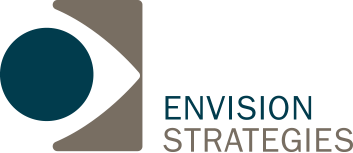Over the years in working with hundreds of dining programs, we’ve noted that dining professionals are increasingly challenged by the complexity of the business. The key stakeholders, particularly organizational leadership, often have little understanding of what it takes to deliver the dining experience that they have come to expect. This has become even more evident during the pandemic.
However, there is hope. In this blog, I’m going to share key insights that we have gained from conversations with industry leaders on the challenges they face relative to complexity - and more importantly - the strategies they employ to overcome them.
It is a Balancing Act Between Many Variables
Some days it feels like managing is a game of whack-a-mole. Quality of the food, variety that meets the needs of a diverse customer base, consistent service delivery, operating costs managed within budget, sufficient staffing by people that are properly trained and engaged, ongoing support of organizational priorities… and the list goes on. All of these must be in alignment for a dining program to be successful.
To solve for this, leading programs have committed to developing and implementing a Continuous Improvement (CI) process that helps management stay on top of issues before they become problems. The best CI programs have this in common:
They don’t measure everything. They only focus on the factors that have the greatest impact and align with strategic goals.
The CI process is frequent, ongoing and routine – annual reviews are good, but too late for many things.
Data is gathered and reported in real time so that actionable priorities can be easily identified.
Dining Programs Serve Many Stakeholders
Striking a balancing act in serving a wide audience, all with different needs, is one of the most complex parts of running a foodservice program. These stakeholders can include:
The customer, who is a constituent group representing many (sometimes conflicting) priorities
The organization, with institutional mission and various initiatives
Leadership
Peer programs (“keeping up with the Joneses”)
Where we see the most success in serving so many stakeholders are high performing dining programs that have implemented AND maintained a regular practice of soliciting feedback in an ongoing basis through several channels:
Engaging customers through a variety of feedback mechanisms
Periodic assessment of program offerings in service of institutional priorities
Regular check-ins with leadership
Peer benchmarking surveys
Expectations to Contribute Beyond Simply Providing Food and Funds
Of course, dining impacts the quality of campus experience, but it is also expected to contribute in a myriad of other ways. Student success, student retention, institutional sustainability goals, communicating commitment to social justice values, just to name a few. Within financial, there are many buckets – contributions to overhead, commissions, meal plan override, scholarships, funded internships, donations, in-kind services, capital investment. These contributions to the organization go far beyond serving food and being a profit center.
So what is the solution in delivering and balancing these contributions? For outsourced programs, part of selecting a dining partner should including identifying goals and expectations for all areas, not just financial, and evaluate proposals relative to the totality of these factors. For self-operated programs, dining services must quantify and communicate the program’s contributions to customers and leadership on a regular basis.
While complexity is a challenge we all face in our work, we hope implementing these strategies will help you embrace them as opportunities to continuously improve, and operate a dining program that delivers superior value to all of your stakeholders.
As always, please reach out if you have thoughts on other complexities faced by dining programs! If you’d like to stay up to date with Envision’s blogs, be sure to subscribe below!

